The Accessibility keyboard also incorporates a feature called ‘Dwell’. Dwell lets you control the mouse using eye or head-tracking hardware. Dwell also works with a mouse or joystick. For more information on Dwell, see our guide How to use Dwell with the on-screen Accessibility Keyboard in macOS 13 Ventura.
Short guide:
- Click the Apple icon
 in the top left corner of the screen and select System Settings.
in the top left corner of the screen and select System Settings. - Click Accessibility in the sidebar.
- Select Keyboard from the list of Accessibilty options.
- Turn on the toggle switch for Accessibility Keyboard.
- To change the settings for the Accessibility Keyboard, click the i button
 next to the toggle switch.
next to the toggle switch.
Before and after
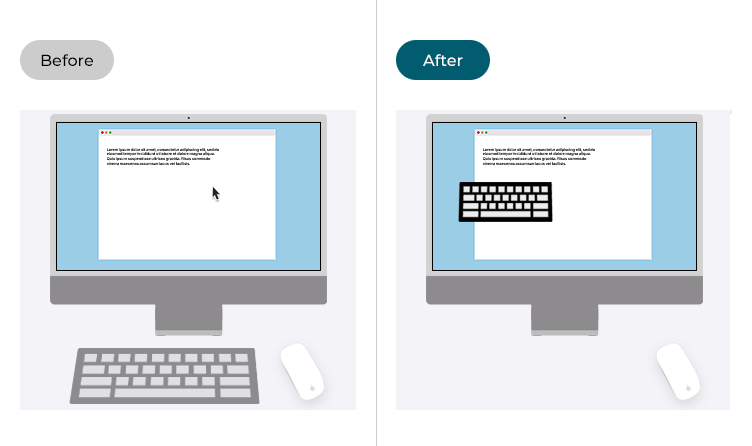
This section gives you step by step instructions on how to enable the Accessibility Keyboard in macOS 13 Ventura, with pictures of the screens to help.
Open System Settings
1. Click the Apple icon ![]() in the top left corner of the screen and choose System Settings from the menu.
in the top left corner of the screen and choose System Settings from the menu.
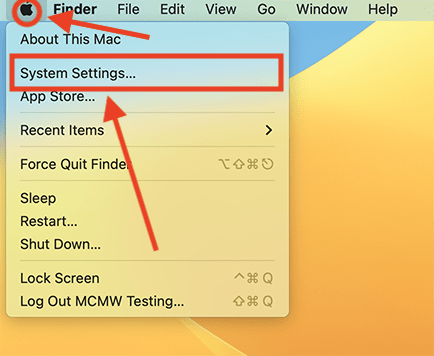
Open the Accessibility settings
2. In the System Settings window, click Accessibility in the sidebar.
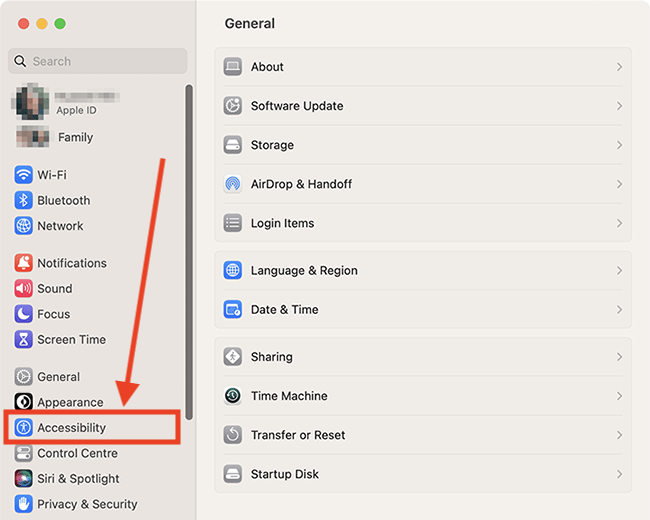
Find the Keyboard settings
3. Select Keyboard from the list of Accessibilty options on the right.
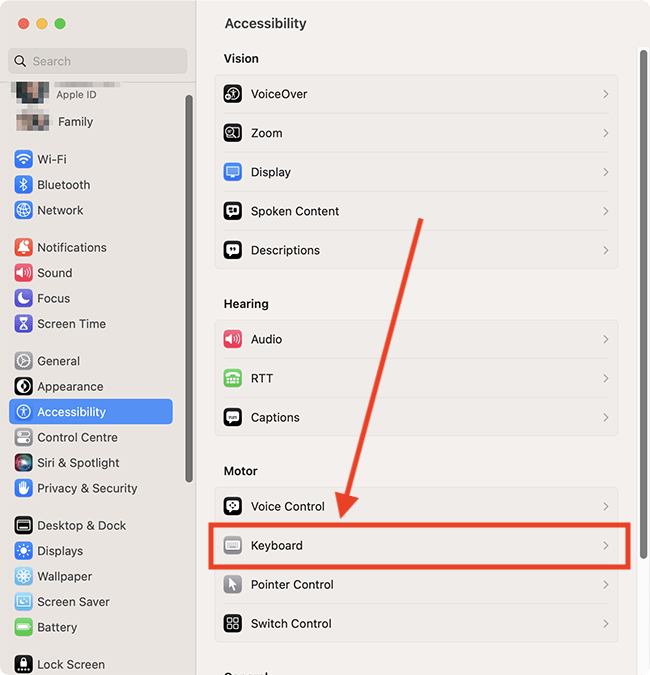
Enable the Accessibility Keyboard
4. On the Keyboard page, click the toggle switch for Accessibility Keyboard to turn it on.

The Accessibility Keyboard
5. The Accessibility Keyboard will appear on-screen.

Customise the Accessibility keyboard
6. Select the Options (more) button ![]() in the top-right corner of the Accessibility Keyboard, then select Settings.
in the top-right corner of the Accessibility Keyboard, then select Settings.
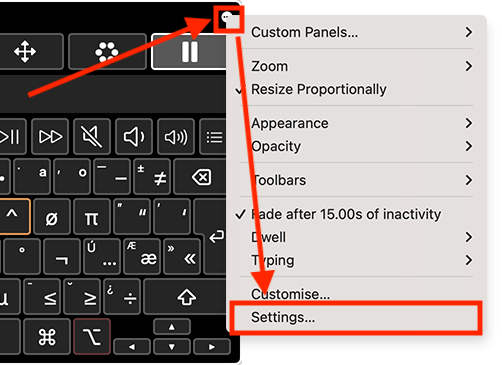
Find the the General settings
7. On the Accessibility Keyboard settings screen, scroll up to the General section.
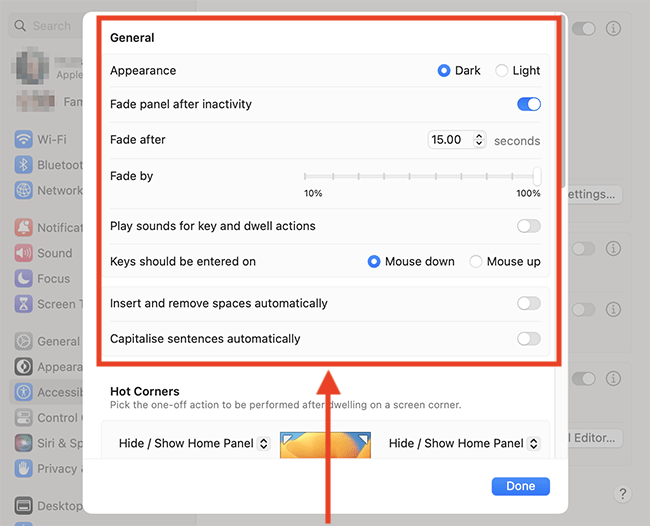
Change the appearance of the keyboard
8. By default, the keyboard uses a dark colour scheme – white letters and icons on black keys. To use a lighter scheme (black letters and icons on light-grey keys), select the Light option for Appearance.
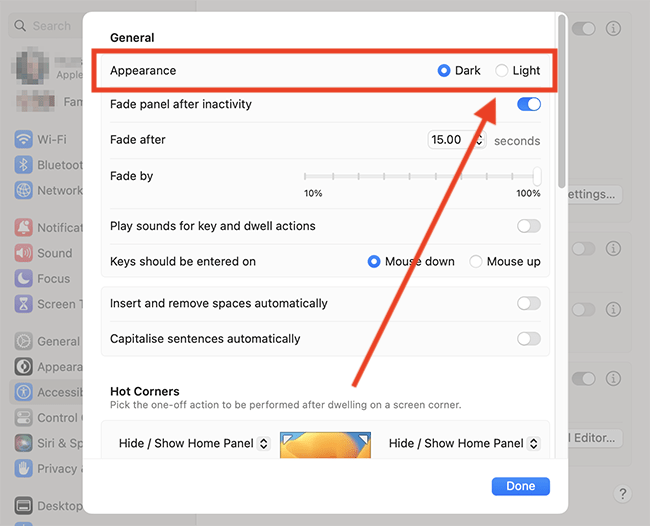
Fade the keyboard after a period of inactivity
9. If you find having the keyboard on-screen all the time obtrusive, you can set it to fade out after a period of inactivity. To do so, set the toggle switch for Fade panel after inactivity to on.
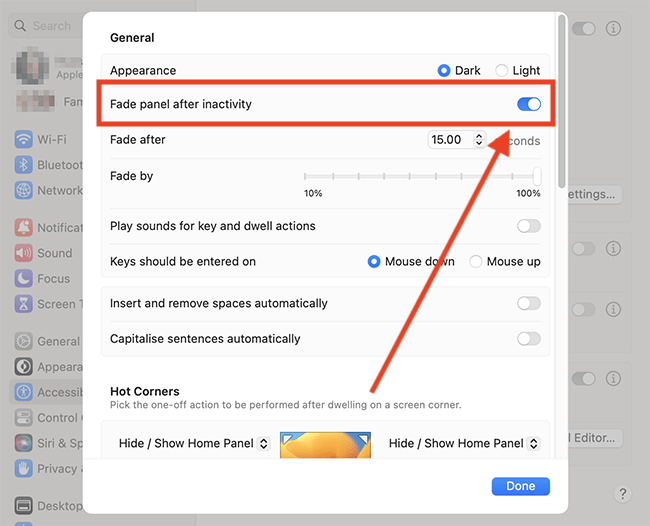
Set how long the period of activity needs to be before the keyboard fades out
10. To set how long the period of inactively needs to be before the keyboard fades out, adjust the seconds setting for Fade after. The default is 15 seconds.

Set how much the keyboard fades by
11. To set how much the keyboard fades after a period of inactivity, adjust the slider for Fade by.

Play a sound when a key is pressed or an action is performed
12. If you would like your computer to play a sound to confirm a key was pressed, or an action was performed, set the toggle switch for Play sounds for keys and dwell actions to on.
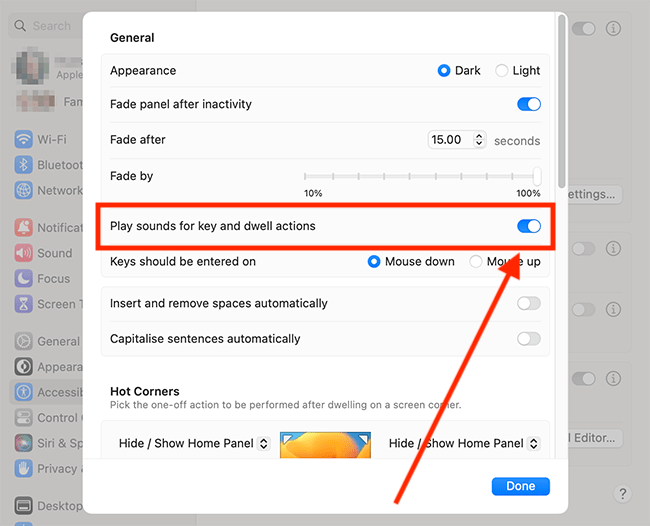
Choose when input is entered
13. By default, characters are entered, and actions performed, when a key is pressed (mouse down). To change this to when a key is released (mouse up), select the Mouse up option for Keys should be entered on.
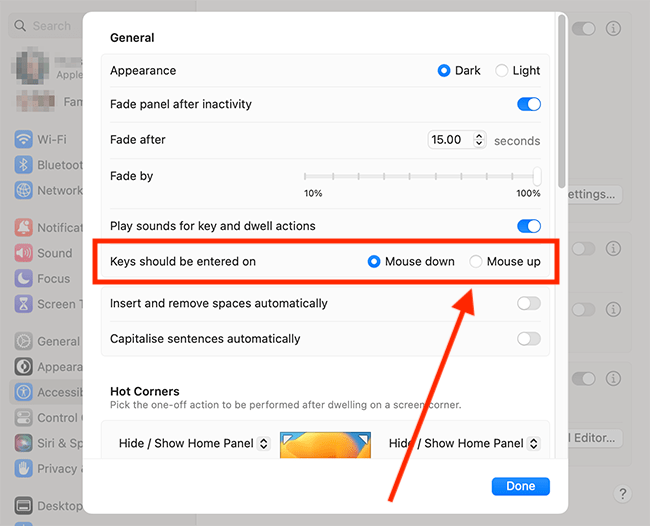
Insert and remove spaces automatically
14. The Accessibility Keyboard can insert or remove spaces for you based on the context of what you are writing. For instance, it will enter a space after a full stop. Set the toggle switch for Insert and remove spaces automatically to on or off as required.
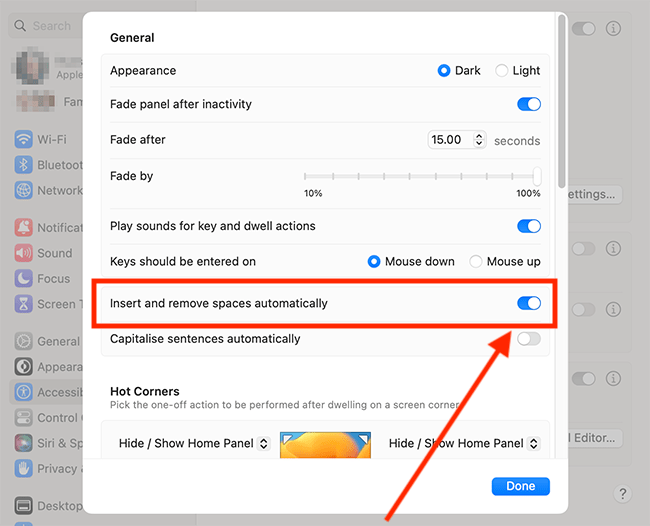
Capitalise sentences automatically
15. The Accessibility Keyboard can capitalise words for you based on the context of what you are writing. For instance, it will capitalise the next word after a full stop. Set the toggle switch for Capitalise sentences automatically to on or off as required.
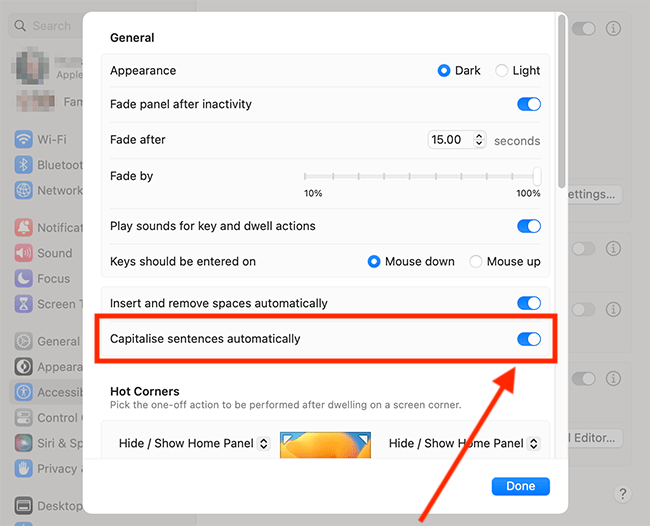
Close the Accessibility Keyboard settings window
16. When you are happy with your settings, click the Done button.
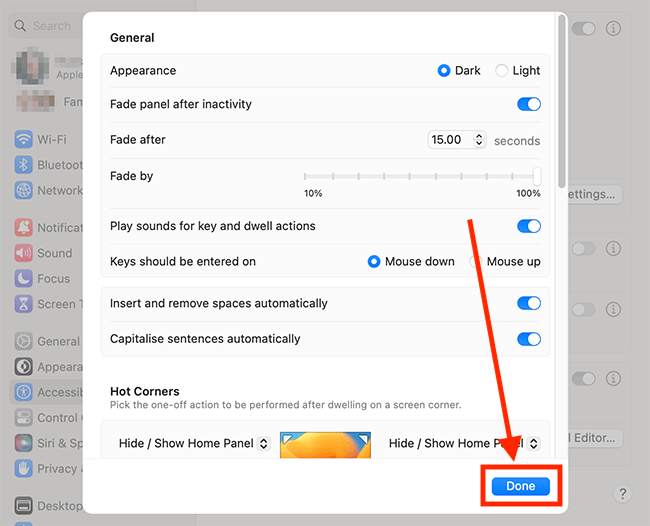
17. To close the entire System Settings window, click the Close button (red circle) in the top-left corner of the window or use the Cmd + W keyboard shortcut.
Typing using the Accessibility Keyboard
18. You can type on the accessibility keyboard with a mouse or trackpad or using an adaptive switch. If you are using eye or head-tracking hardware you can dwell (rest the pointer) on keys to make selections.
As your type, a wide selection of words will appear in the auto-suggestion row. Select any of these words to insert them into the text you are writing.
In order to perform keyboard shortcuts using the Accessibility Keyboard, you will first need to enable Sticky Keys. Sticky Keys allows you to perform shortcuts by pressing the keys one after the other rather than pressing them all at the same time. For more information on using Sticky Keys, see our article How to make keyboard shortcuts easier to perform in macOS 13 Ventura.

Use Custom panels to perform custom actions
19. You can create your own collections of buttons to perform various tasks on your computer, such as entering pre-written text, opening apps, running shortcuts, or performing advanced mouse actions. For more information on creating your own custom panels, see our guide How to create panels to use with Switch Control and the Accessibility Keyboard in macOS 13 Ventura.
Use Dwell to perform mouse action
20. With Dwell, you can perform mouse actions, such as left-clicks, by resting (dwelling) the pointer on items on the screen For more information on using Dwell, see out guide How to use Dwell with the on-screen Accessibility Keyboard in macOS 13 Ventura.
Use Hot Corners to switch Dwell actions
21. You can assign actions to each corner of the screen, such as temporarily switching to a different Dwell action or hiding the Accessibility Keyboard. Resting the mouse on a corner triggers the corresponding action. This is known as Hot Corners. For more information on using Hot Corners, see out guide How to use Hot Corners with the on-screen Accessibility Keyboard in macOS 13 Ventura.
Note: If this does not work it could be because your computer settings are managed by someone else (an IT department or administrator for example). If so, you will need to contact them to access these settings or for help.